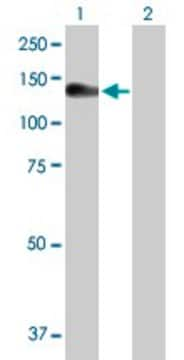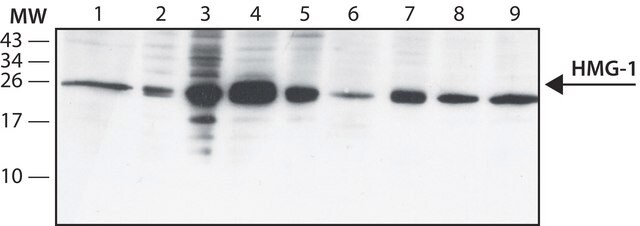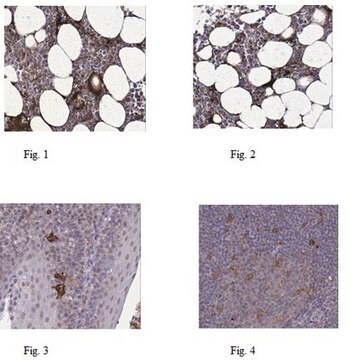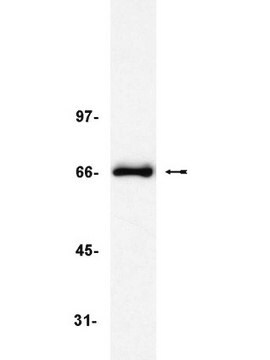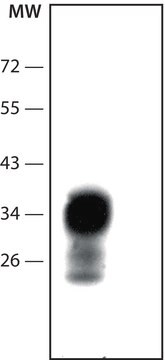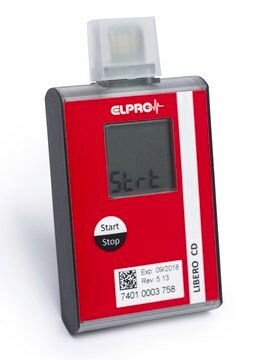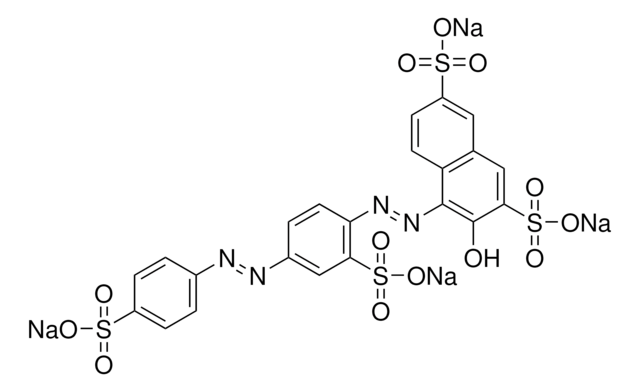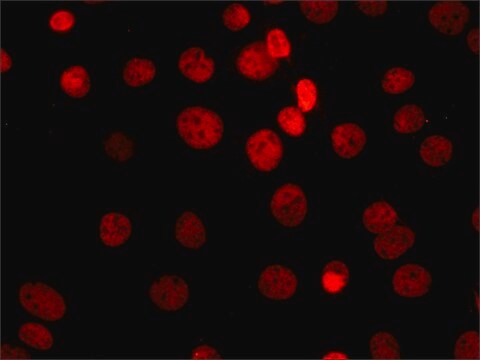Wichtige Dokumente
T1948
Anti-TRF1 antibody, Mouse monoclonal
~2 mg/mL, clone TRF-78, purified from hybridoma cell culture
Synonym(e):
Anti-Telomeric Repeat Binding Factor 1
About This Item
Empfohlene Produkte
Biologische Quelle
mouse
Qualitätsniveau
Konjugat
unconjugated
Antikörperform
purified from hybridoma cell culture
Antikörper-Produkttyp
primary antibodies
Klon
TRF-78, monoclonal
Form
buffered aqueous solution
Mol-Gew.
antigen ~70 kDa by SDS-PAGE
Speziesreaktivität
human
Verpackung
antibody small pack of 25 μL
Konzentration
~2 mg/mL
Methode(n)
indirect ELISA: suitable
microarray: suitable
western blot: 2-4 μg/mL using HeLa nuclear extract
Isotyp
IgG1
UniProt-Hinterlegungsnummer
Versandbedingung
dry ice
Lagertemp.
−20°C
Posttranslationale Modifikation Target
unmodified
Angaben zum Gen
human ... TERF1(7013)
Allgemeine Beschreibung
Spezifität
Immunogen
Anwendung
Biochem./physiol. Wirkung
Physikalische Form
Haftungsausschluss
Sie haben nicht das passende Produkt gefunden?
Probieren Sie unser Produkt-Auswahlhilfe. aus.
Lagerklassenschlüssel
10 - Combustible liquids
WGK
WGK 2
Hier finden Sie alle aktuellen Versionen:
Besitzen Sie dieses Produkt bereits?
In der Dokumentenbibliothek finden Sie die Dokumentation zu den Produkten, die Sie kürzlich erworben haben.
Unser Team von Wissenschaftlern verfügt über Erfahrung in allen Forschungsbereichen einschließlich Life Science, Materialwissenschaften, chemischer Synthese, Chromatographie, Analytik und vielen mehr..
Setzen Sie sich mit dem technischen Dienst in Verbindung.